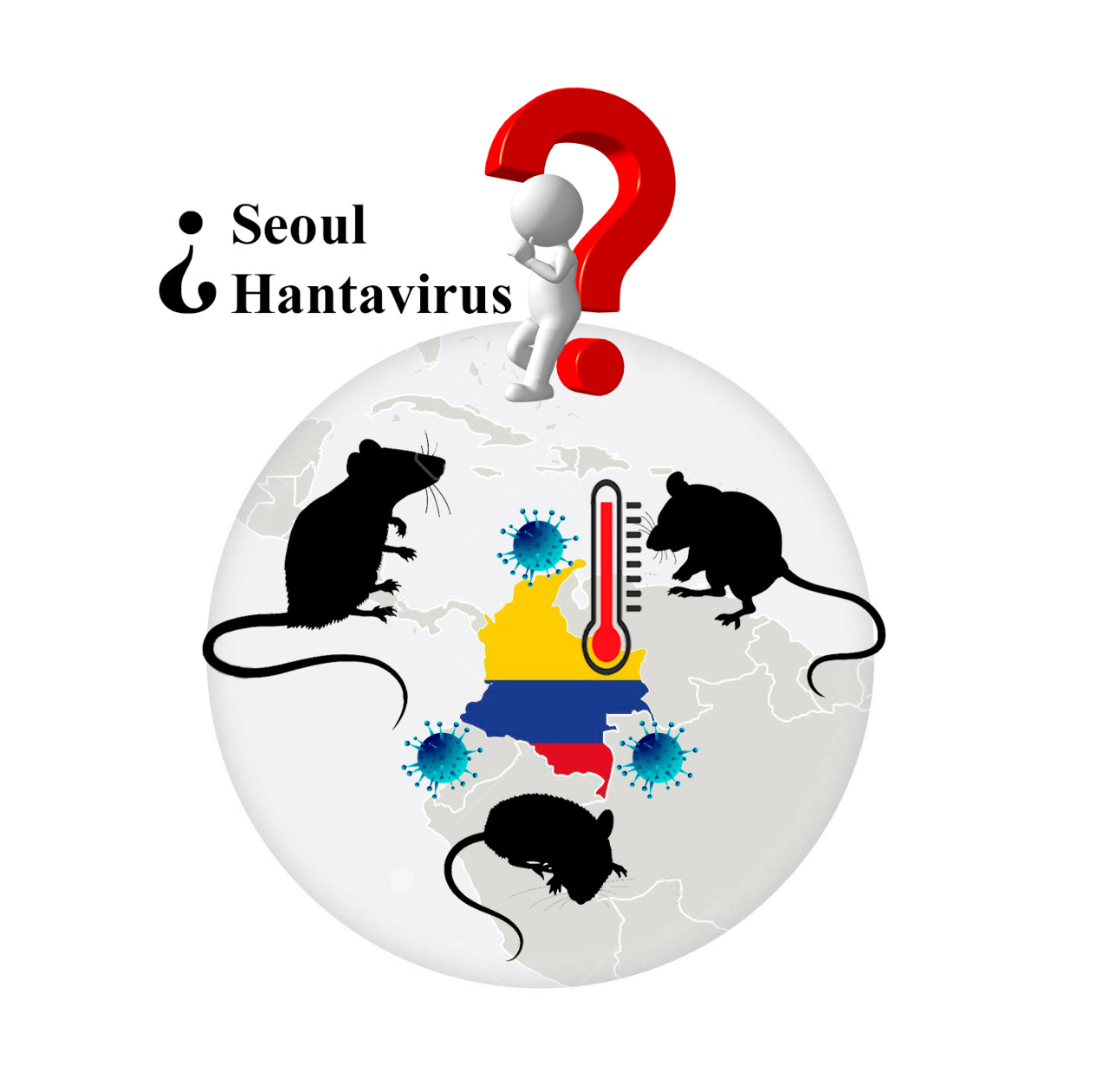¿Podría el hantavirus Seúl ser una etiología de la enfermedad febril aguda indiferenciada en Colombia?
Seoul hantavirus could be an etiology of acute undifferentiated febrile illness in Colombia?

Esta obra está bajo una licencia internacional Creative Commons Atribución-NoComercial-CompartirIgual 4.0.
Mostrar biografía de los autores
Los hantavirus se clasifican en dos grupos principales, hantavirus del Viejo Mundo' y del ''Nuevo Mundo' debido a la distribución geográfica de sus reservorios (roedores) (1). Los hantavirus del Viejo Mundo (por ejemplo, virus Hantaan, Seúl, Puumala, entre otros) causan fiebre hemorrágica con síndrome renal (HFRS, por sus siglas en inglés), mientras que los hantavirus del Nuevo Mundo (por ejemplo, virus Sin Nombre, Andes, entre otros) afectan principalmente al pulmón causando el síndrome pulmonar por hantavirus (HPS, por sus sigla en inglés) (1).
Visitas del artículo 1009 | Visitas PDF
Descargas
- Jonsson CB, Figueiredo LT, Vapalahti O. A Global Perspective on Hantavirus Ecology, Epidemiology, and Disease. Clin Microbiol Rev, 2010; 23(2):412-441. https://doi.org/10.1128/CMR.00062-09
- Clement J, LeDuc JW, McElhinney LM, Reynes J, Van Ranst M, Calisher CH. Clinical Characteristics of Ratborne Seoul Hantavirus Disease. Emerg Infect Dis. 2019; 25(2):387-388. https://dx.doi.org/10.3201/eid2502.181643
- Kim YS, Ahn C, Han JS, Kim S, Lee JS, Lee PW. Hemorrhagic fever with renal syndrome caused by the Seoul virus. Nefrón. 1995; 71(4):419-427. https://doi.org/10.1159/000188762
- García PM, Percy S, Herrera AL, Donaires F, Álvarez C, Arrasco J, et al. Confirmación Etiologic de los dos primeros casos de Hantavirosis Humana en Perú. Rev Peru Med Exp Salud Publica. 2011; 28(3):564-570. https://doi.org/10.17843/rpmesp.2011.283.542
- Hindrichsen S, Medeiros A, Clement J, Leirs H, Mc Kenna P, Matthys P, et al. Hantavirus infection in Brazilian patients from Recife with suspected leptospirosis. Lancet, 1993; 341(8836):50. https://doi.org/10.1016/0140-6736(93)92523-V
- Seijo A, Pini N, Levis S, Coto H, Deodato B, Cernigoi B, et al. Study of Hantavirus seoul in a human and rodent population from a marginal area in Buenos Aires City. Medicina (B Aires). 2003; 63(3):193-196. https://pubmed.ncbi.nlm.nih.gov/12876901/
- Clement J, Esbroeck M V, Lagrou K, Verschueren J, Sunil-Chandra NP, Ranst M V. Leptospirosis versus hantavirus infections in the Netherlands and in Belgium, 2000 to 2014. Euro Surveill. 2014; 19(38):20912. https://doi.org/10.2807/1560-7917.ES2014.19.38.20912
- Arroyave E, Londoño AF, Quintero JC, Agudelo-Florez P, Arboleda M, Díaz FJ, Rodas JD. Etiología y caracterización epidemiológica del síndrome febril no palúdico en tres municipios del Urabá antioqueño, Colombia. Biomedica. 2013; 33(Sup1):99-107. https://doi.org/10.7705/biomedica.v33i0.734
- Mattar S, Tique V, Miranda J, Montes E, Garzón D. Undifferentiated tropical febrile illness in Cordoba, Colombia: Not everything is dengue. J Infect Public Health. 2017; 10(5):507-512. https://pubmed.ncbi.nlm.nih.gov/28162961/
- Mattar S, Garzon D, Tadeu L, Faccini-Martínez AA, Mills JN. Serological diagnosis of hantavirus pulmonary syndrome in a febrile patient in Colombia. Int J Infect Dis. 2014; 25:201-203. https://doi.org/10.1016/j.ijid.2014.03.1396
- Lederer S, Lattwein E, Hanke M, Sonnenberg K, Stoecker W, et al. Correction: Indirect Immunofluorescence Assay for the Simultaneous Detection of Antibodies against Clinically Important Old and New World Hantaviruses. PLOS Neglected Tropical Diseases. 2020; 14(11):e0008864. https://doi.org/10.1371/journal.pntd.0008864
- Arroyo MS, Corrales AH, Perez JJ, Alvarez GL, Castellar MA, Blanco TP. Evidencia serológica de infección por hantavirus (Bunyaviridae: Hantavirus) en roedores del Departamento de Sucre, Colombia. Rev Salud Pública. 2012; 14(5):755-764. https://revistas.unal.edu.co/index.php/revsaludpublica/article/view/22357
- Sánchez L, Mattar S, Rodriguez D, Tique V, Rodríguez I. First serological evidence of hantavirus infection in humans from the Orinoquia region of Colombia. Braz J Infect Dis. 2016; 20(5):507-508. https://doi.org/10.1016/j.bjid.2016.05.006























